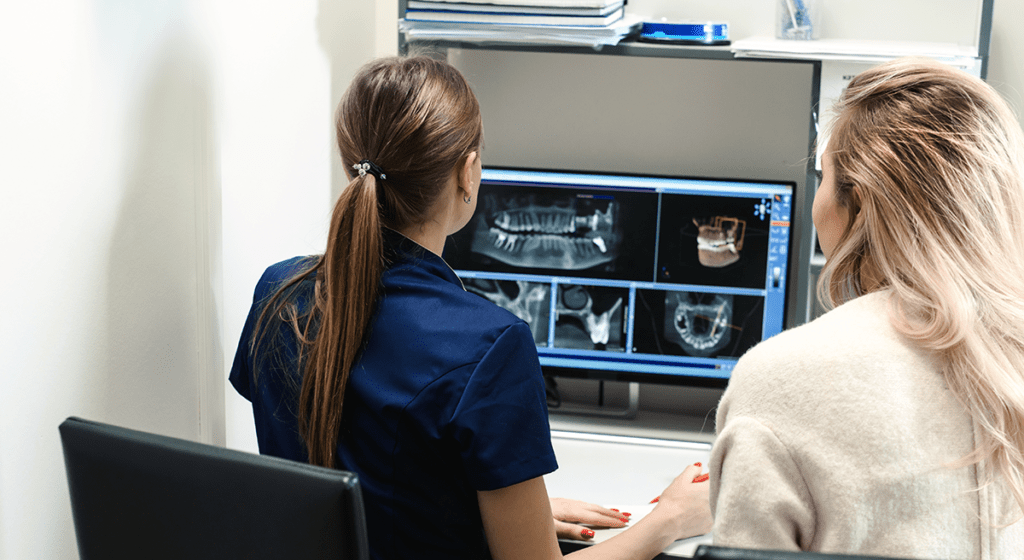Cone beam CT scan imaging, also known as CBCT, is a three dimensional dental X-ray that produces images of your teeth, soft tissue, nerve pathways, and bone. A CBCT is used when conventional X-rays are unable to provide the detail needed. The images from a CBCT scan give your dentist the ability to plan your dental treatment more precisely.

During a cone beam CT scan, an X-ray beam, in the shape of a cone, is moved around you to produce a large number of high-quality views. It produces detailed images of your bone and is used to evaluate and diagnose diseases of your jaw, dentition, the bony structures of your face, your nasal cavity, and sinuses. It doesn’t provide the full diagnostic information of a conventional CT scan that your dentist may need to evaluate your soft tissue structures, such as your muscles, lymph nodes, glands, and nerves. The advantages of a cone beam CT scan is that there is lower exposure to radiation as compared to a conventional CT scan.
Cone beam CT scans are typically used to diagnose a condition or plan treatment of the following and more:
- Surgical planning of impacted teeth
- Diagnosis of temporomandibular joint disorder (TMJ)
- Placement of dental implants
- Evaluation of the jaw, sinuses, nerve canals, nasal cavity
- Detecting tumors of the jaw
- Determining the source of pain
- Reconstructive surgery
- Cleft palate malformations
During the procedure you may either sit in a chair or lie down on a moveable table. The scanner will rotate around your head in a 360-degree rotation while it captures multiple images, from different angles, creating a single 3-D image. The entire procedure is painless and non-invasive.
There’s little to no preparation for a cone beam CT scan. You can wear loose, comfortable clothing. Make sure you leave any jewelry or accessories at home. You may be asked to remove metallic objects or anything that may interfere with the imaging process. If there’s a possibility that you are pregnant, please let your doctor know beforehand.